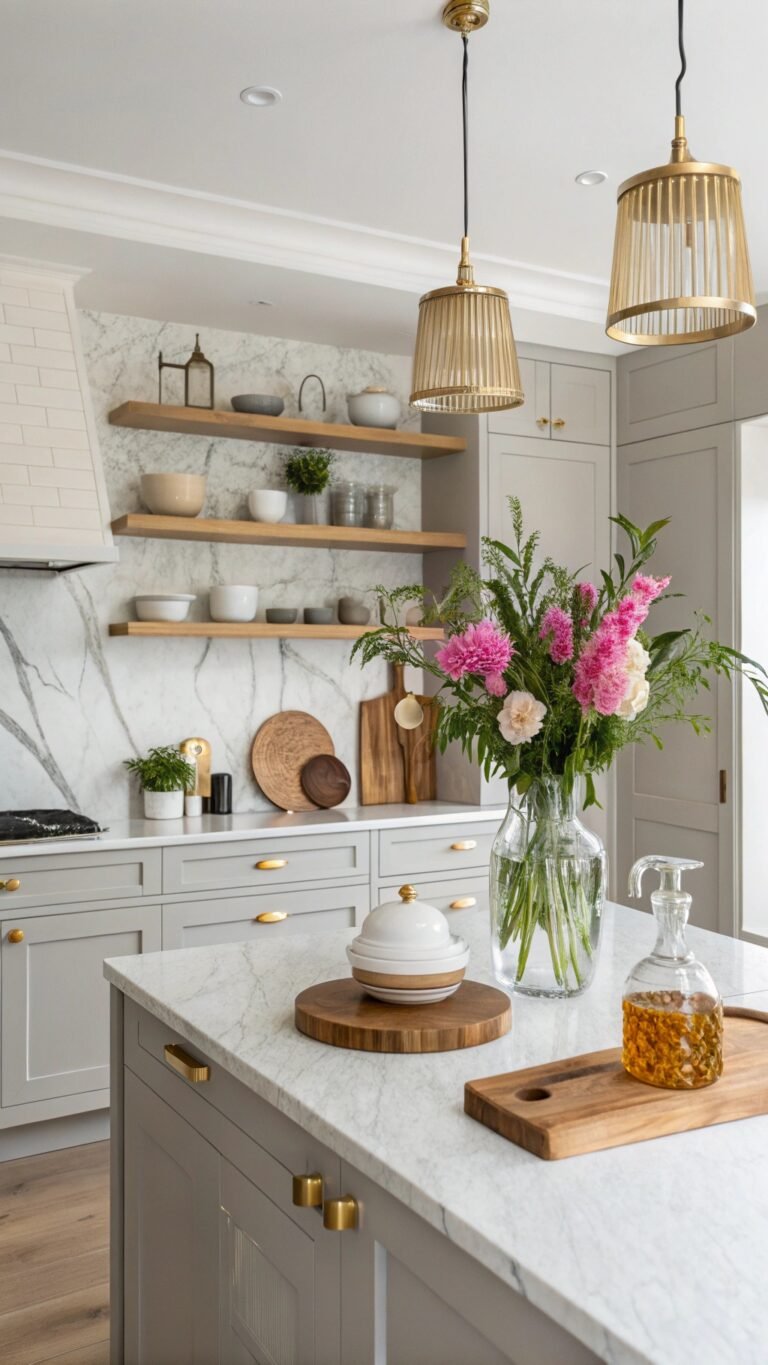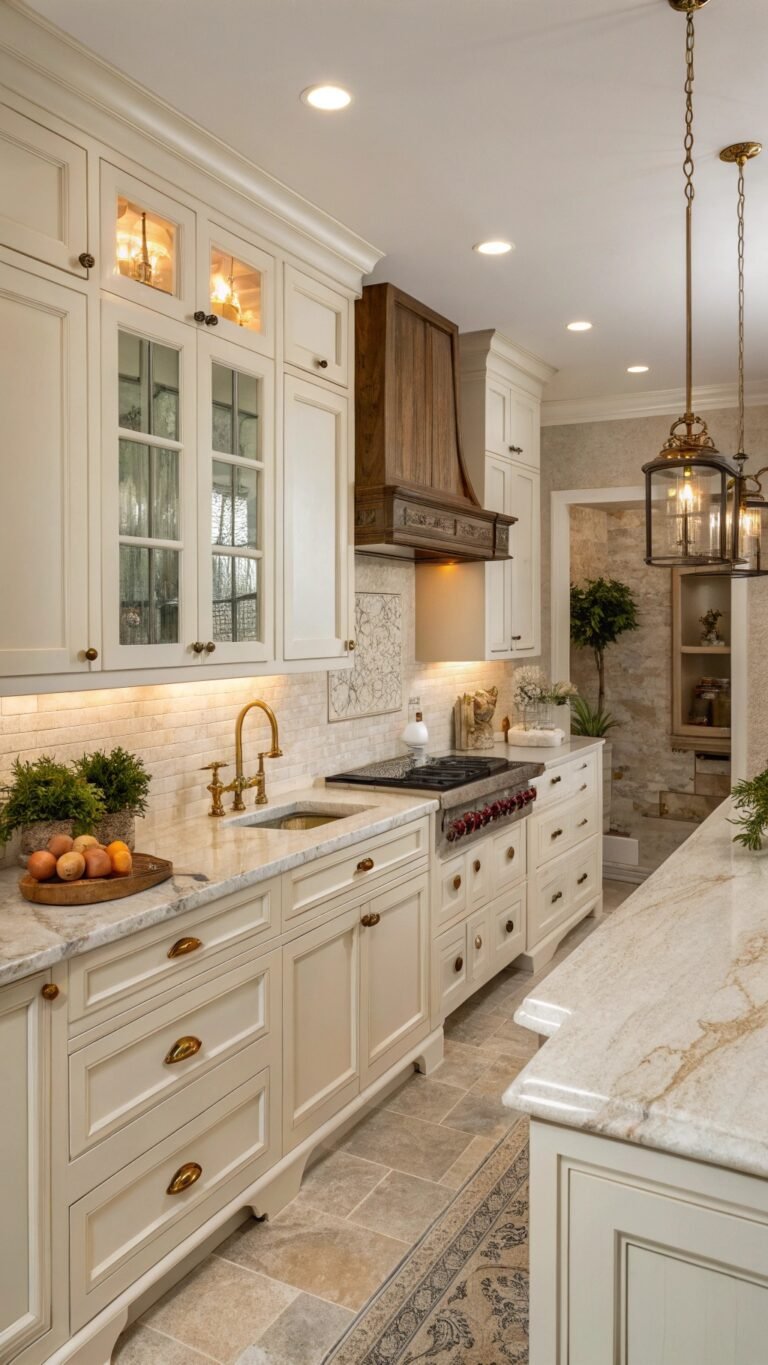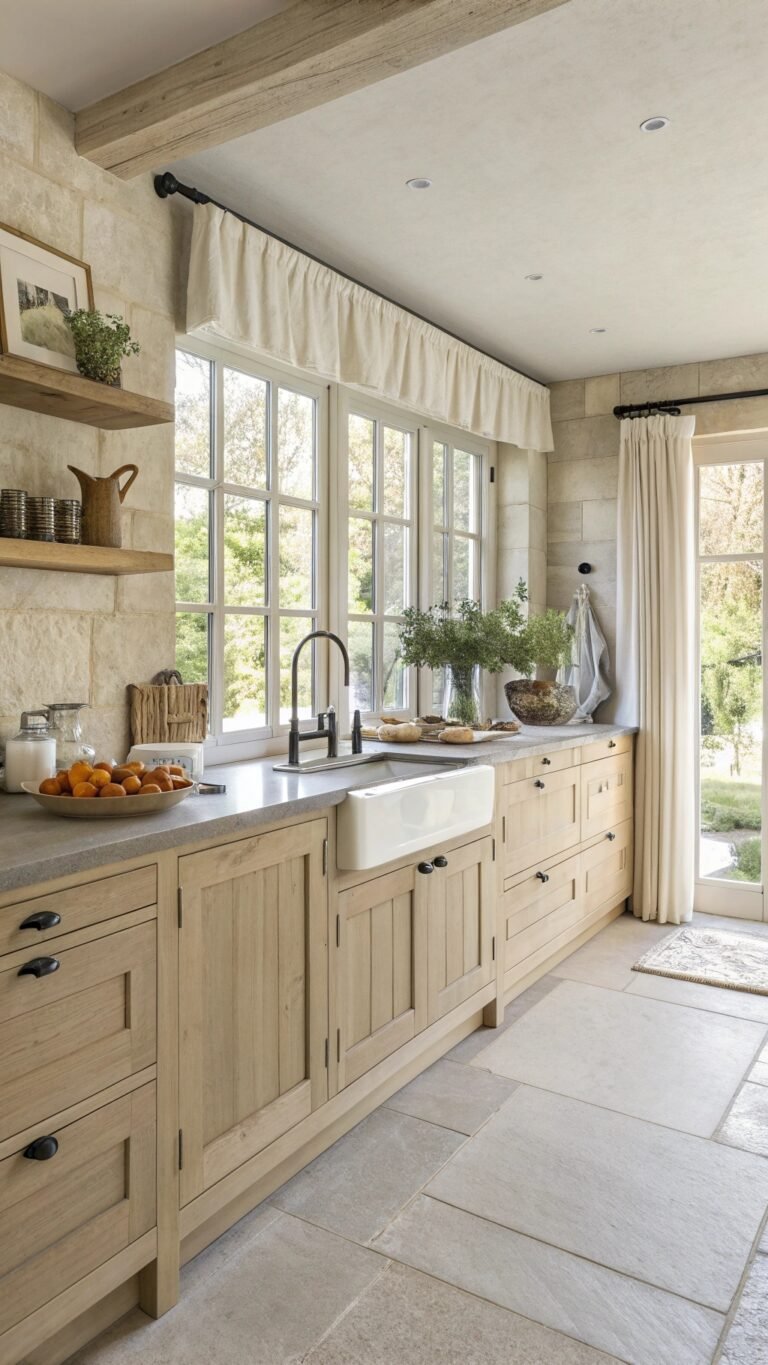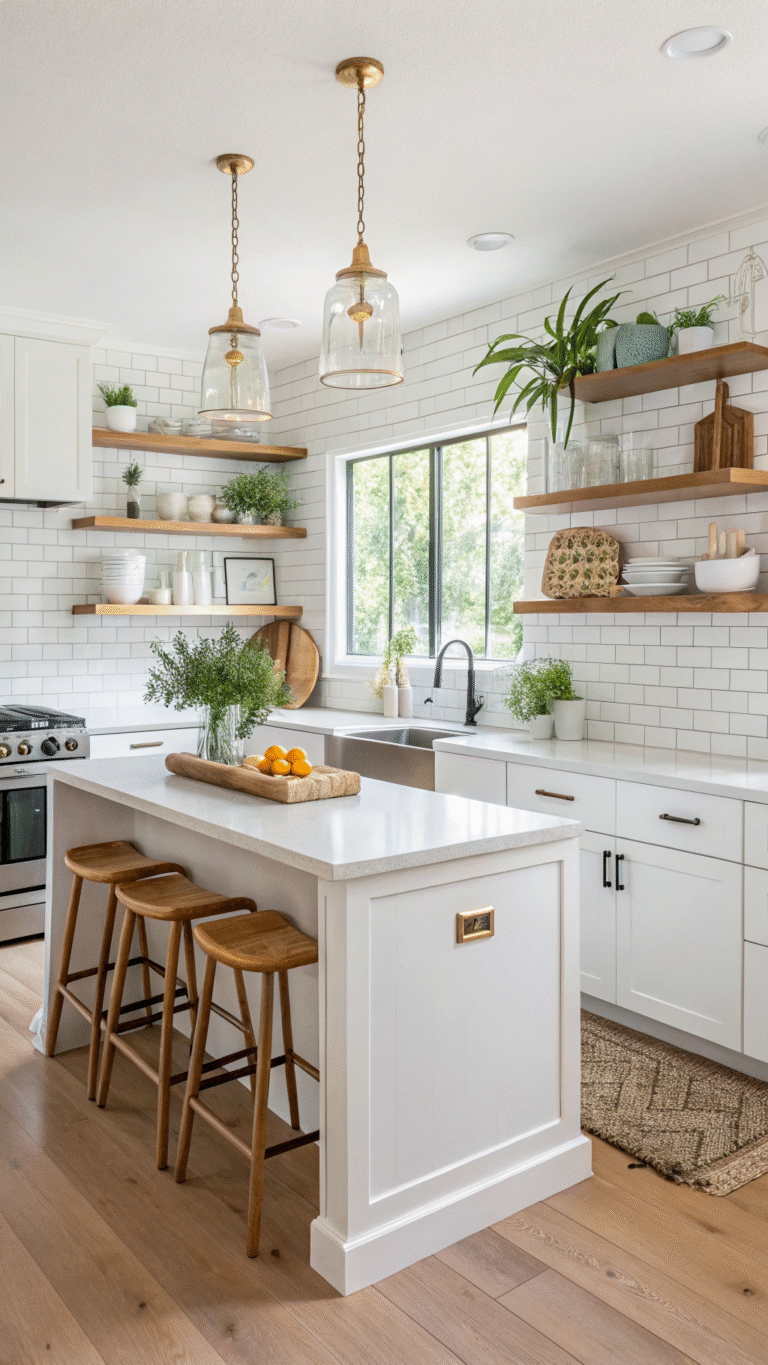Kitchen Cabinets: 15 Fresh Looks That Blend Style, Storage, and Staying Power
Kitchen cabinets are stealing the spotlight as homeowners trade quick makeovers for upgrades that transform function and resale value.
From slender-frame insets to fluted fronts and steel-glass hybrids, today’s cabinetry pairs craftsmanship with clever organization.
Pick one headline move—finish, profile, or layout—then echo it in hardware and lighting for a kitchen that looks tailored and works harder.
1) Shaker 2.0 (Slim-Rail Shaker)
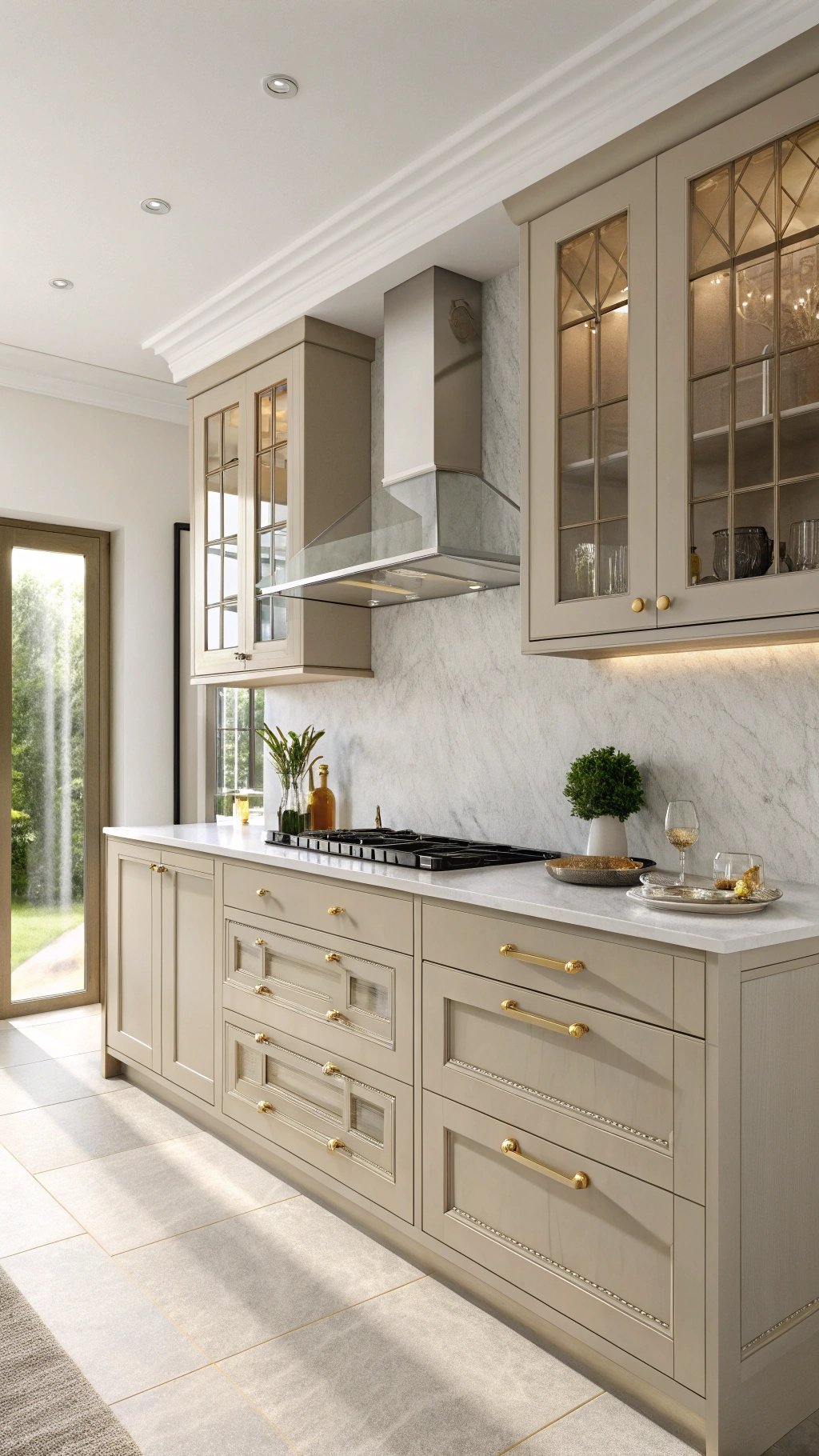
Shaker’s clean lines endure for a reason, but tightening the stiles and rails modernizes the profile without losing warmth.
Slim-rail doors keep sightlines uncluttered, especially in compact kitchens. Pair with concealed hinges, integrated trash pull-outs, and a deep drawer stack under the cooktop.
The look balances heritage and minimalism, plays nicely with stone or quartz, and photographs beautifully under both daylight and warm evening light.
What makes something unique:
Color-drench the millwork in a modern neutral—mushroom, putty, or olive gray—and specify a satin sheen for wipeability with low glare.
Swap standard knobs for small backplate pulls to protect paint around high-touch zones. Add a single reeded-glass upper to break the run. The micro-updates read bespoke while preserving Shaker’s timeless calm.
2) Flat-Slab Minimalist
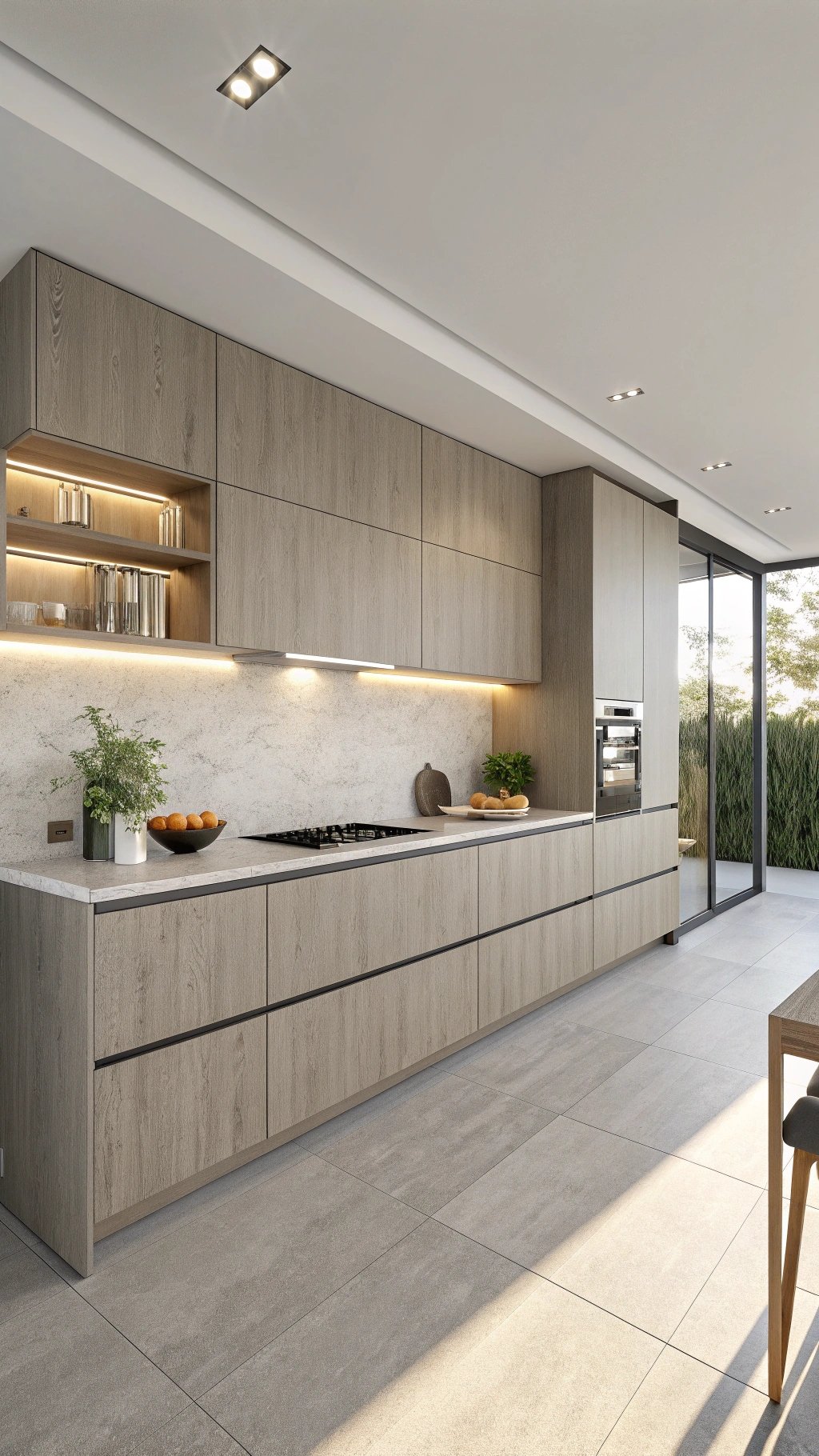
Flat-slab doors create a seamless plane that visually enlarges tight rooms. Handleless channels or push-to-open hardware keep faces uninterrupted; specify vertical grain on tall units for height.
Use drawers over doors in base cabinets for easier access. Pair with a low-profile backsplash shelf and an integrated hood to maintain the quiet envelope.
What makes something unique:
Warm the minimalism with rift-cut oak or walnut for island or tall units while perimeter cabinets stay painted.
Repeat the wood tone once more—stool seats or a picture frame—to avoid a showroom feel. A concealed rail light grazing the slab fronts adds soft shadow play that elevates the simplicity without introducing clutter.
3) Inset Framed Classics
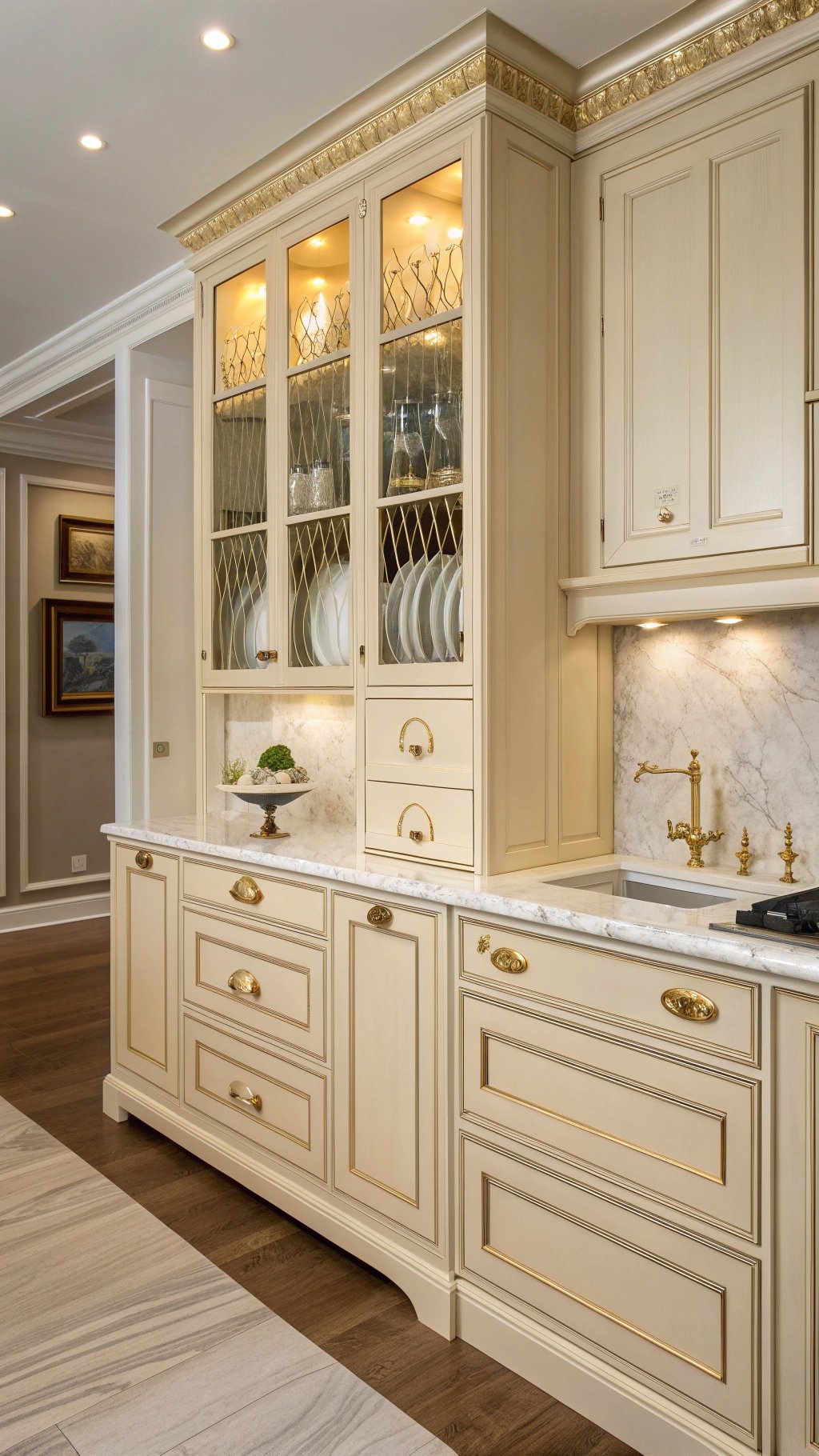
Inset doors sit flush inside a framed opening, telegraphing craftsmanship and precise reveals. This style shines in heritage homes or any kitchen aiming for furniture-like refinement.
Combine double-stacked uppers with a plate rack or small hutch. Drawer internals—knife blocks, peg dish organizers—make every inch feel custom while keeping surfaces clear.
What makes something unique:
Color-match cabinetry to wall tone within one shade and finish exposed end panels like furniture, with bead detail or eased corners.
A curated mix of unlacquered brass and porcelain knobs yields a soft, collected patina. The restrained palette lets veined stone or checkerboard floors sing without competing lines.
4) Beaded Inset with Heritage Color
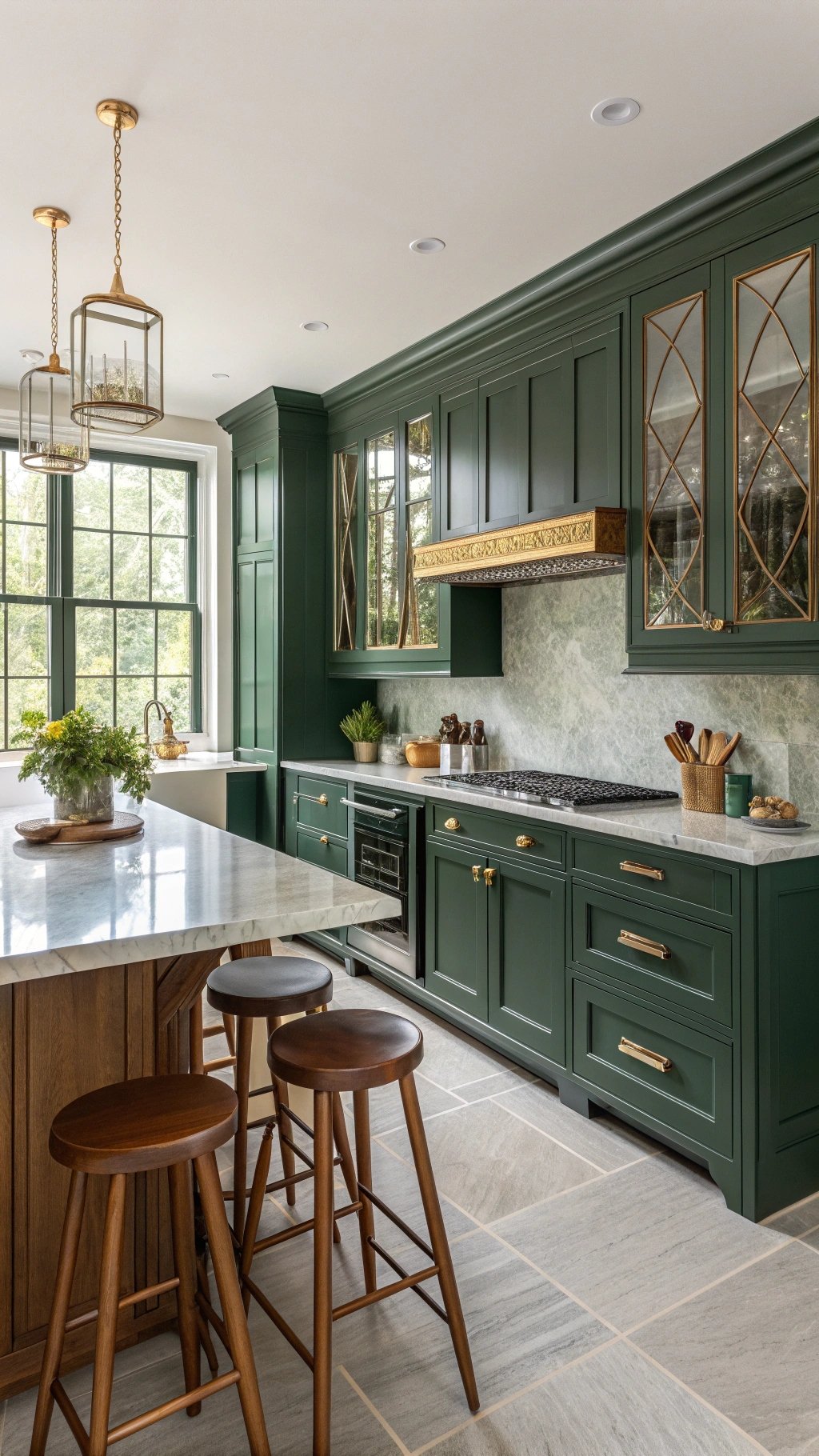
Beaded inset adds a delicate shadow line that lends dimension to traditional profiles. Lean into color—deep bottle green, Baltic blue, or oxblood—to anchor the room with a single confident move.
Balance with warm metals and forgiving, honed stone. The bead keeps saturated hues from reading flat by catching light around the frame.
What makes something unique:
Repeat the cabinet color on the island plinth or a narrow picture rail for continuity. Use antique-mirror backsplash tiles only behind the range to bounce light without overwhelming.
The contrast of refined bead detail and moody color reads bespoke, historic, and distinctly now.
5) Fluted & Reeded Fronts
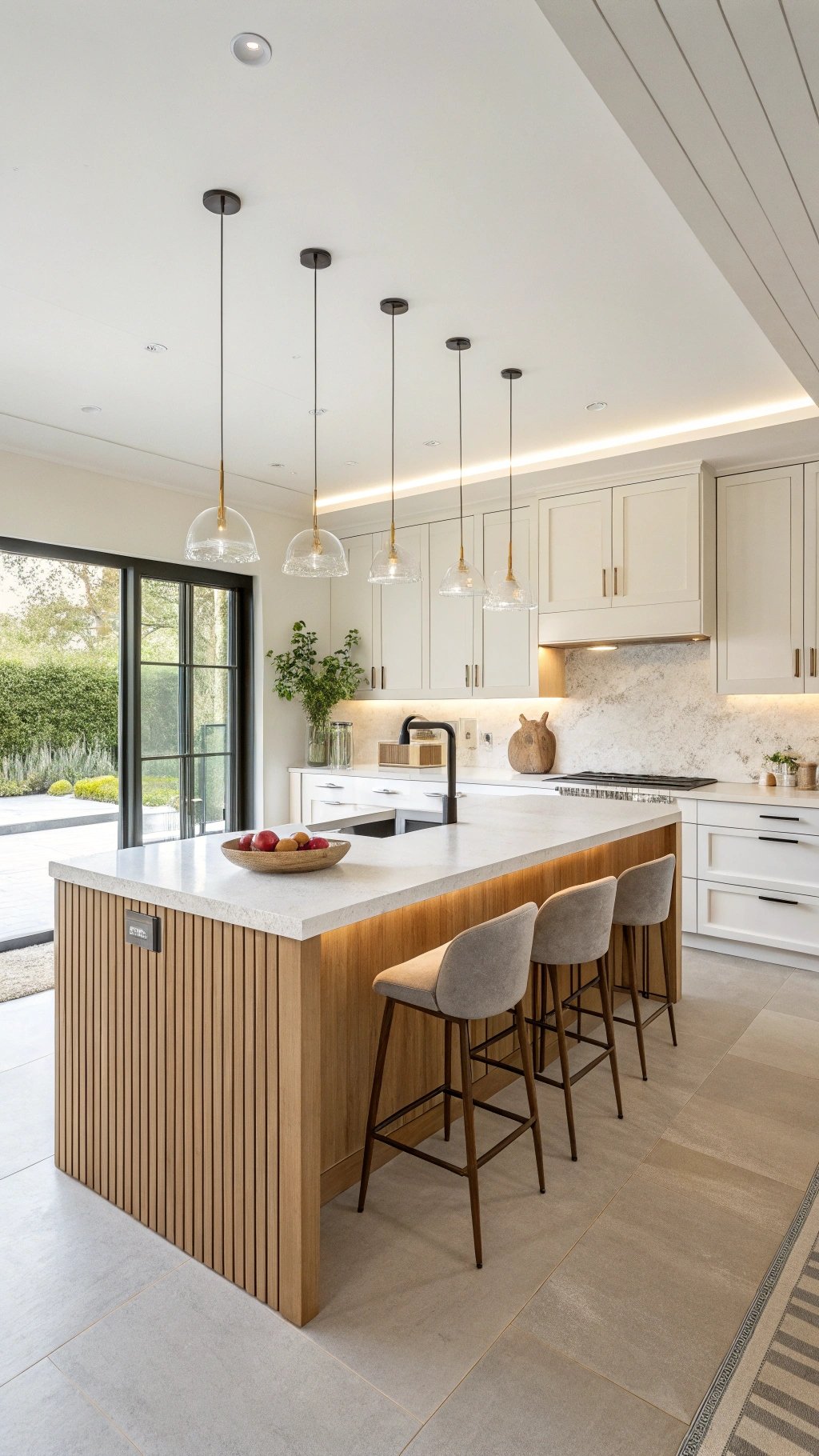
Vertical fluting or reeded panels bring texture without pattern chaos. Use on an island or a pantry wall to introduce depth that hides fingerprints and minor dings.
The rhythm of shadows pairs well with quiet stone and plain plaster walls, offering a tactile counterpoint to sleek appliances.
What makes something unique:
Color or material contrast matters: paint fluted MDF in a satin tone that matches walls, or specify real oak with a matte clear finish for natural grain.
Keep surrounding cabinets flat to let the reeding star. A perimeter LED toe-kick grazes the texture at night, turning cabinetry into sculpture.
6) Glass-Front Uppers (Ribbed or Clear)
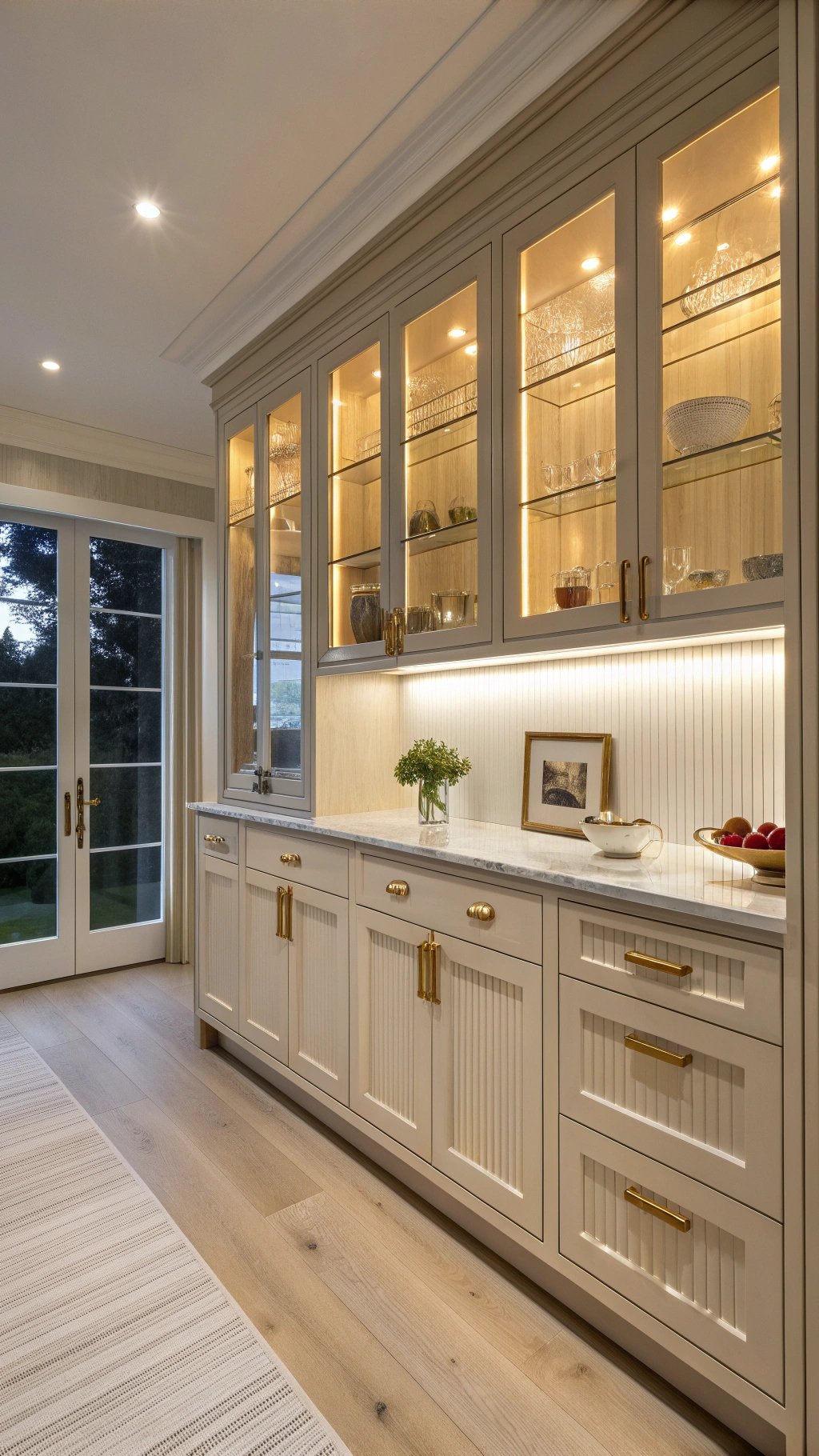
Glass uppers lighten the visual weight of tall runs and showcase your best pieces. Ribbed (reeded) glass blurs contents while catching light; clear glass demands disciplined styling but rewards with sparkle.
Use two shelves max per cabinet and repeat the same vessel shapes for calm, gallery-like rhythm.
What makes something unique:
Color-match interior cabinet boxes, including the shelves, to the exterior so the glass reads cohesive rather than busy.
Add a concealed puck or strip light inside each unit for evening glow. A single brass latch per door keeps hardware minimal and jewel-like, raising perceived quality without clutter.
7) Two-Tone Done Right
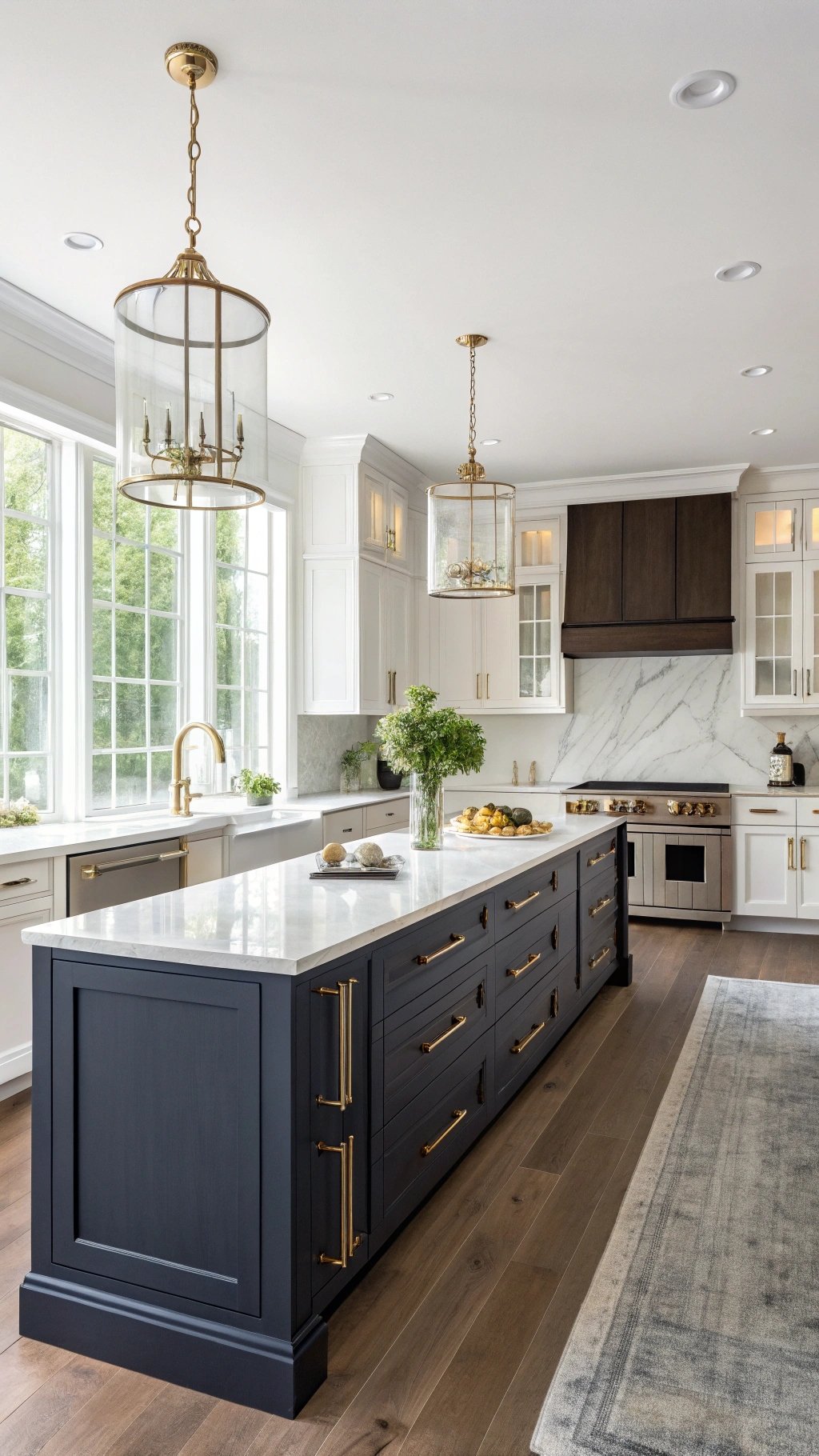
Split tones by function: lighter uppers to lift the room, richer lowers for grounding. Keep metals consistent and tie colors back to fixed finishes like flooring or stone veining.
A deeper base color hides scuffs, while pale uppers reflect light and reduce the “cabinet canyon” effect.
What makes something unique:
Use a third, natural material—oak or walnut—only on the island to bridge the two paints. Echo the darker base tone on window trim or a rail to stitch the palette together.
The controlled trio reads curated and allows easy seasonal swaps without repainting the entire kitchen.
8) Color-Drenched Modern Heritage
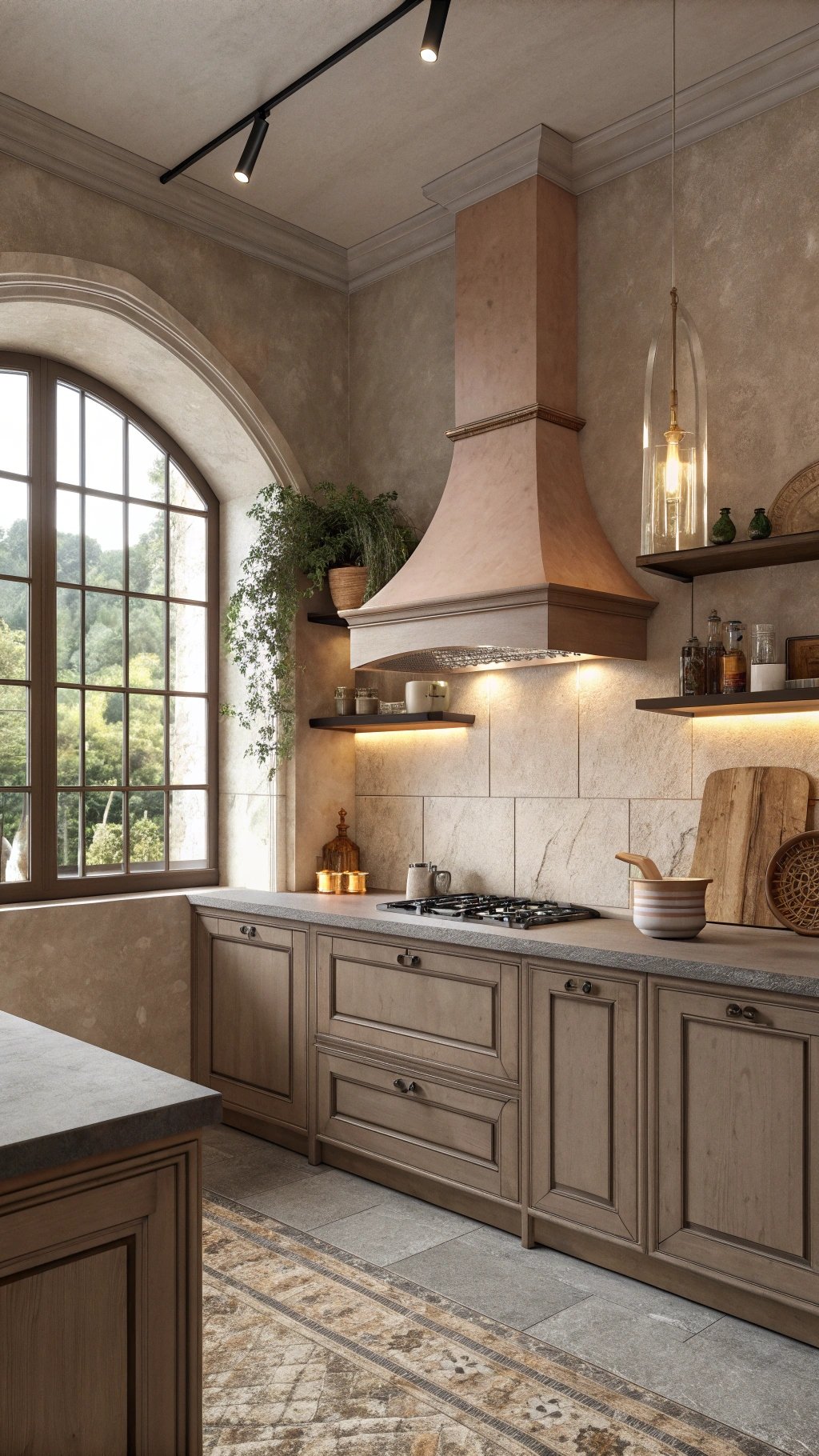
Wrap cabinets, trim, and even the hood in one saturated color for a cocooned, editorial effect. Matte finishes keep bold hues sophisticated, while matching the crown and toe-kick heightens the “installed” look. Limit open shelves and keep counter styling tight to avoid visual noise.
What makes something unique:
Play with sheen layering: matte doors, satin hood, and honed stone. Bring the color onto a nearby door or built-in to extend the architecture.
Repeat the hue on one small accessory—ceramic fruit bowl or linen shade—so the drench feels intentional and livable, not costume.
9) Natural Oak, Low-Sheen
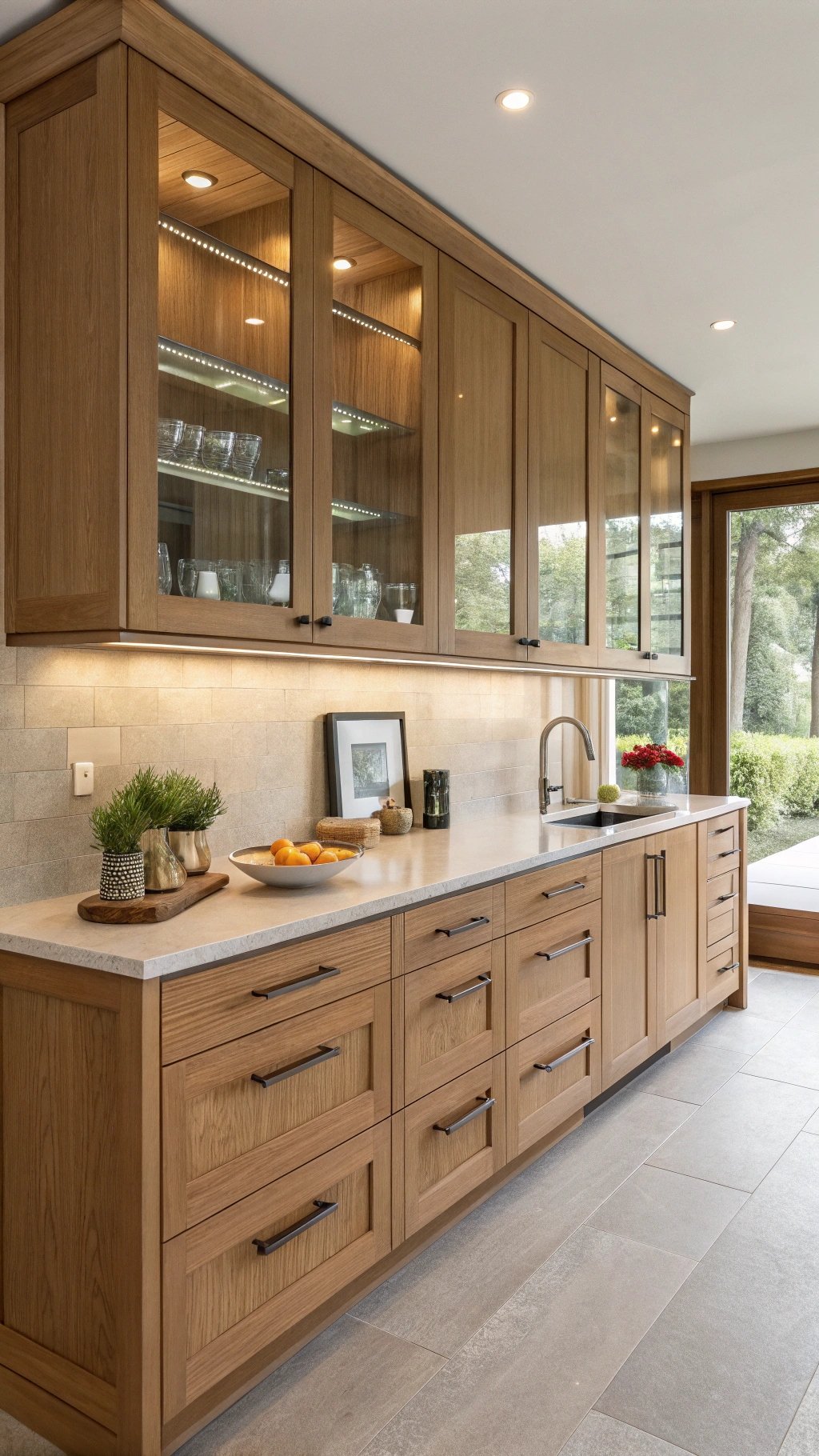
Natural, lightly wire-brushed oak adds warmth that ages gracefully. Vertical grain on tall larders visually stretches the space; horizontal grain on drawer fronts widens the run.
Low-sheen finishes disguise fingerprints and make maintenance easy. Pair with limestone, soapstone, or quartz that reads quiet.
What makes something unique:
Specify integrated pulls or slim edge rails to preserve the timber’s uninterrupted grain. Add a single glass-front bar cabinet or display niche to balance the wood mass.
The honest materiality channels calm luxury, and small dings patina rather than ruin the look.
10) Steel & Glass Industrial-Lite
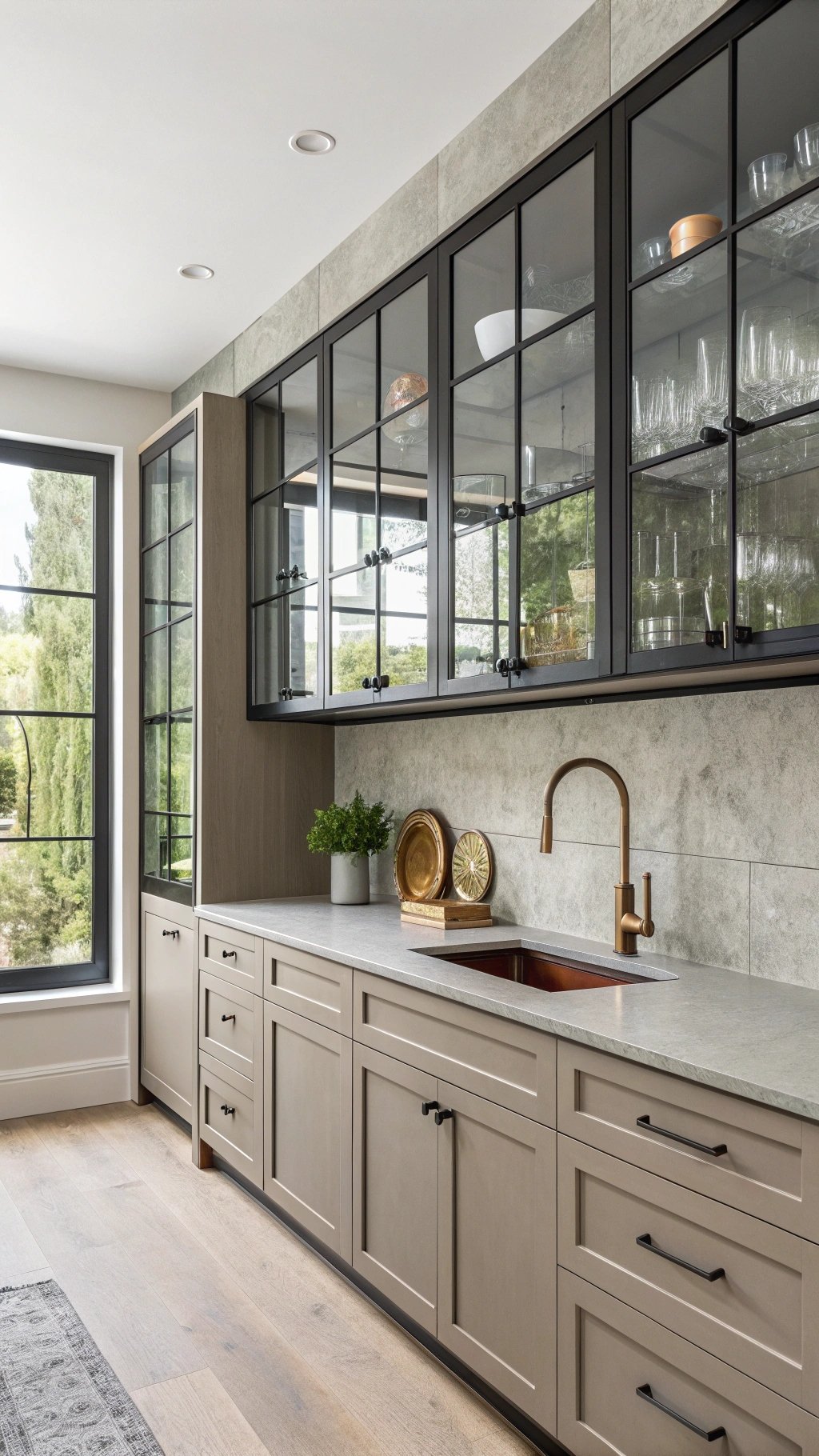
For lofts or modern builds, a steel-and-glass upper paired with painted or wood lowers brings airiness without going full commercial.
Slim mullions keep proportions elegant; blackened or bronze finishes soften the industrial vibe. Inside, adjustable racks make the most of vertical space.
What makes something unique:
Use smoked or lightly antiqued glass for softer reflections and add a warm wood shelf below to bridge metals and stone.
A matching steel toe-kick ties the composition together at ground level. The mix feels crafted and architectural while staying approachable for daily use.
11) Open + Closed Hybrid Wall
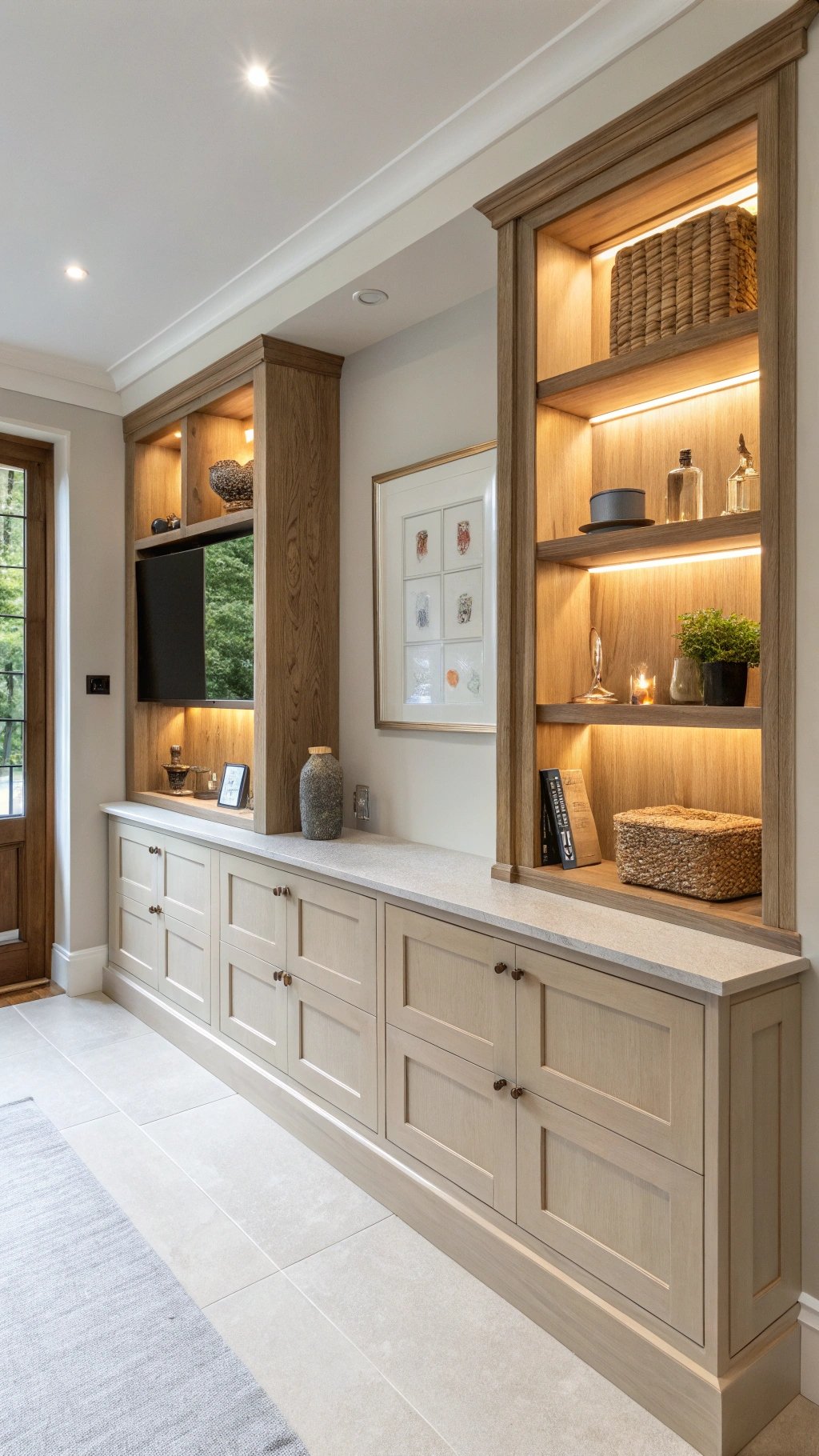
Not everything needs a door. Combine closed cabinets with one or two open niches sized to coffee mugs, cookbooks, or ceramics.
Keep niche interiors a contrasting finish—wood inside painted runs, or vice versa—to create a built-in focal point that doubles as easy-access storage.
What makes something unique:
Light the niches with tiny concealed strips for evening glow and add a subtle lip to keep items secure.
Repeating the niche width across the run creates rhythm that feels designed, not random, and gives you a place to style without committing to open shelving everywhere.
12) The Pantry Wall (Appliance + Storage)
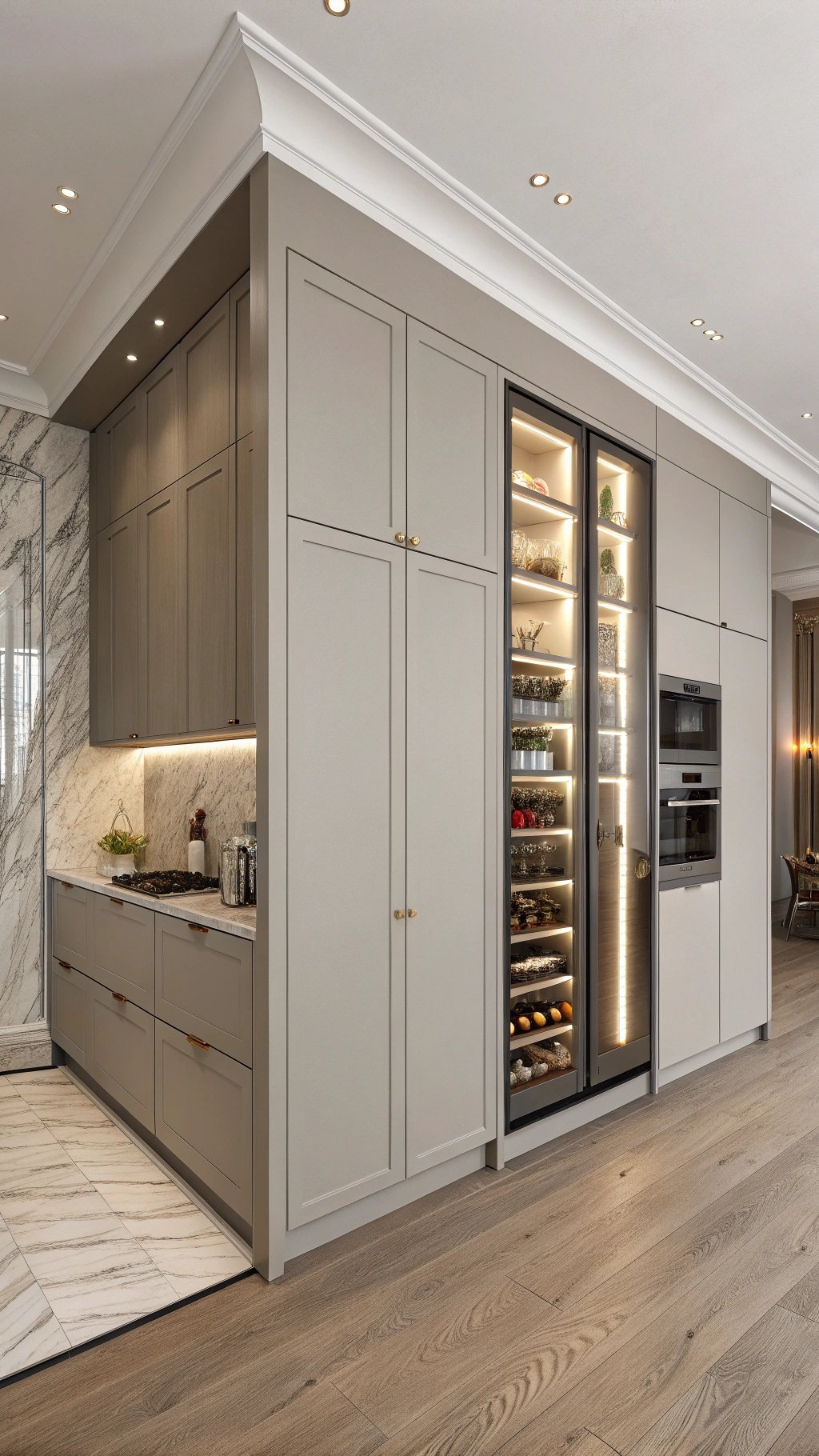
Dedicate one elevation to tall storage: integrated fridge/freezer columns, a full-height pantry pull-out, and a broom cupboard with charging shelf.
Externally, the facade reads as a calm wall; internally, it’s a workhorse that shortens cooking routes and tucks visual clutter out of sight.
What makes something unique:
Hide a pocket-door appliance garage with a stone counter inside for espresso or toaster, complete with outlets and task lighting.
Include shallow door racks for spices and oils so prep items live where you reach for them. The all-in-one wall keeps the rest of the kitchen visually light.
13) Furniture-Style Island
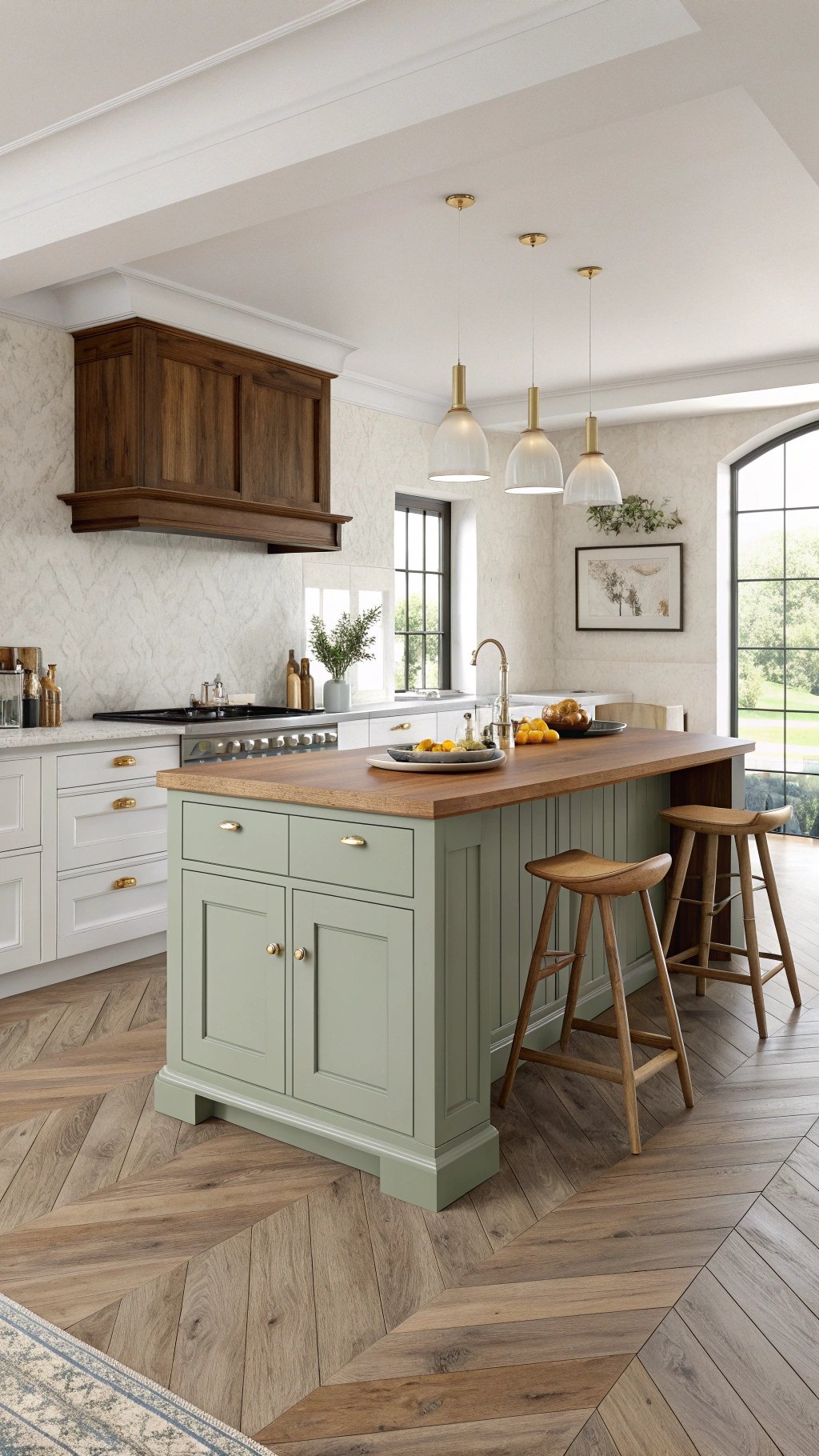
Treat the island like a freestanding piece: legs or feet, paneled ends, and a furniture-grade finish.
Add drawers for prep tools and a shallow spice tier near the cooktop. Seating on one side keeps the work triangle clear while inviting lingering conversations.
What makes something unique:
Contrast finish and top—painted base with walnut butcher block, or oak base with marble slab—to set the island apart from perimeter runs.
Use a single, overscaled pull style across drawers for a boutique look. The island becomes the room’s anchor without overwhelming small footprints.
14) Ceiling-Height Uppers with Transoms
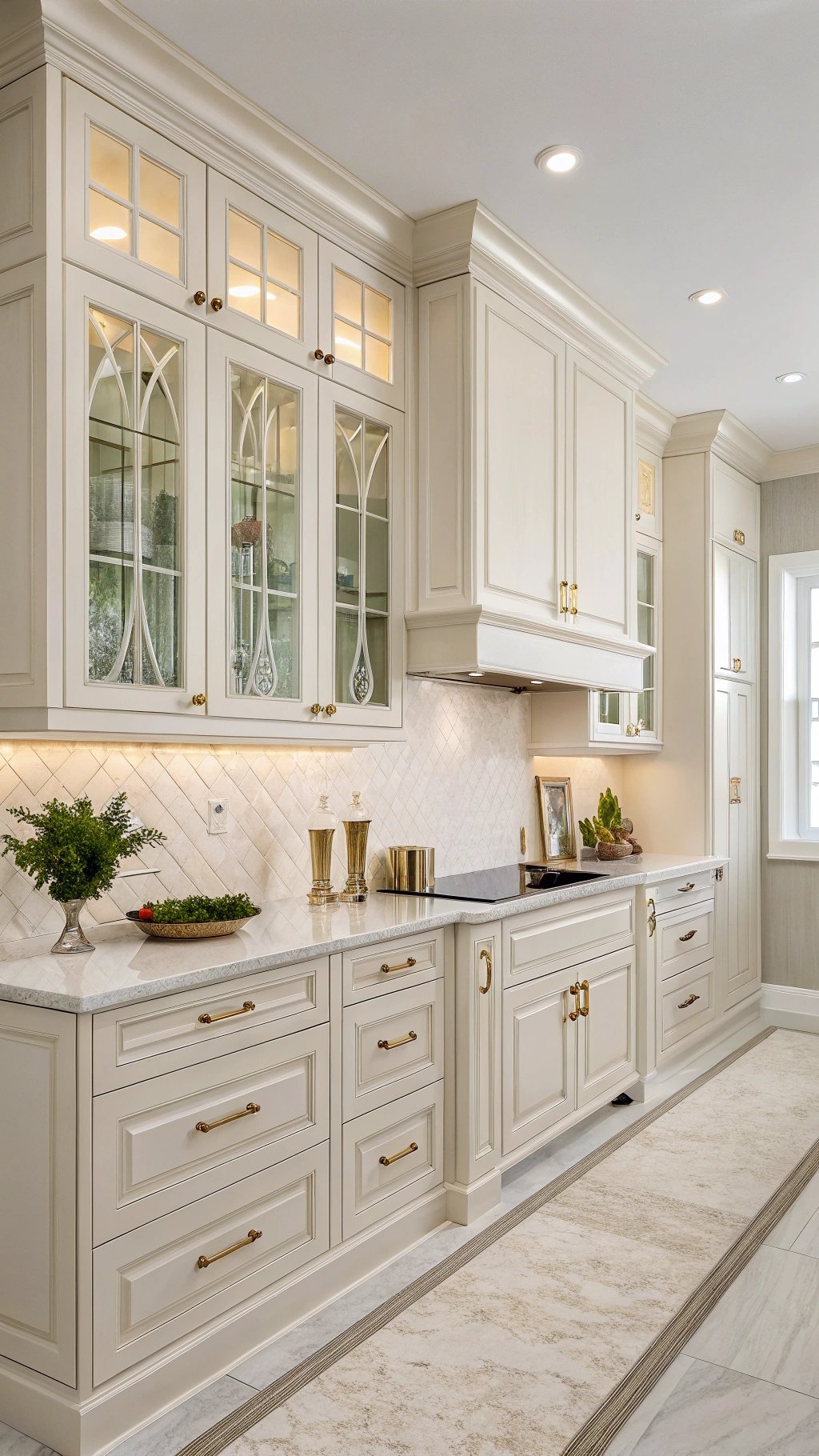
Run upper cabinets to the ceiling and add small transom doors above the everyday zone. The extra tier stores seldom-used items (holiday platters) while stretching the room’s proportions. Crown or a simple shadow gap finishes the top cleanly depending on style.
What makes something unique:
Glaze or glass the transoms to keep the top visually light, then color-match the interior for cohesion. Soft-close vertical lifts on the main uppers prevent door collisions in tight aisles.
The approach delivers more storage without the heaviness of one huge solid door.
15) Eco-Smart Cabinetry That Ages Well
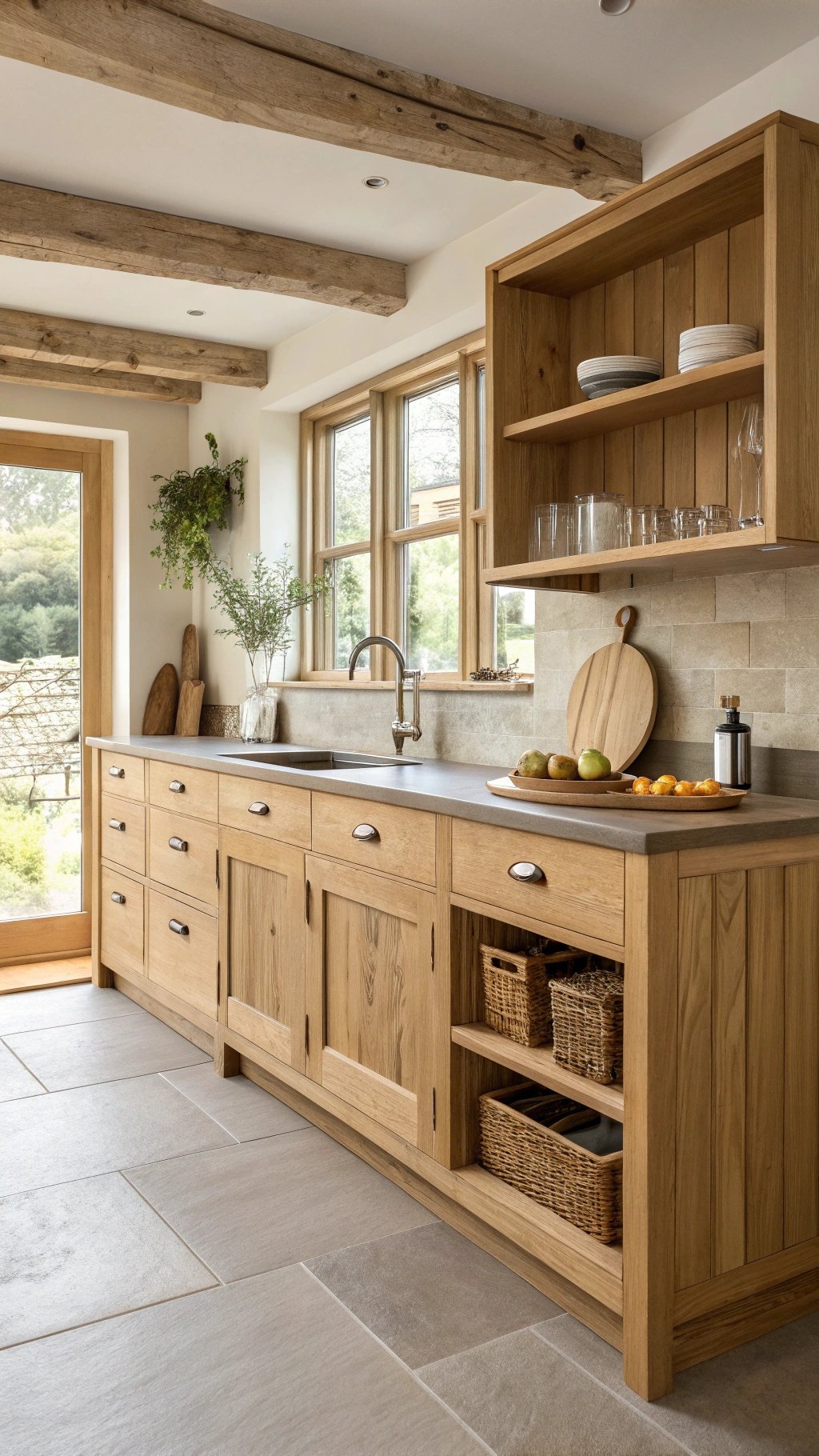
Sustainability and luxury align in today’s cabinets. FSC-certified plywood boxes, low/zero-VOC finishes, and formaldehyde-free cores protect indoor air.
Durable laminates or veneers over stable substrates prevent warping, while replaceable fronts extend life. Soft-close hardware reduces slamming and loosening over time.
What makes something unique:
Show the eco story: reclaimed-wood accents with visible joinery, modular bins for compost and recycling, and refilling stations behind a pull-out.
Choose solid brass or stainless hardware that patinas instead of chipping. The kitchen looks richer each year, proving longevity is the most beautiful finish.
Quick Tips to Nail Kitchen Cabinets
Pick one hero: profile, color, or texture—then echo it in hardware and lighting.
Use drawers over doors in bases for everyday ergonomics.
Light inside glass or niche zones for instant evening ambiance.

